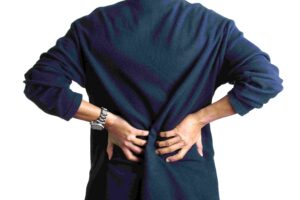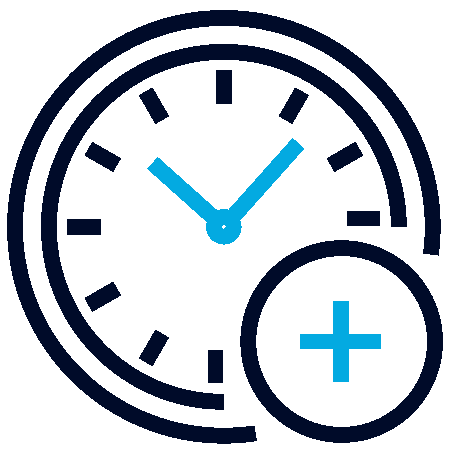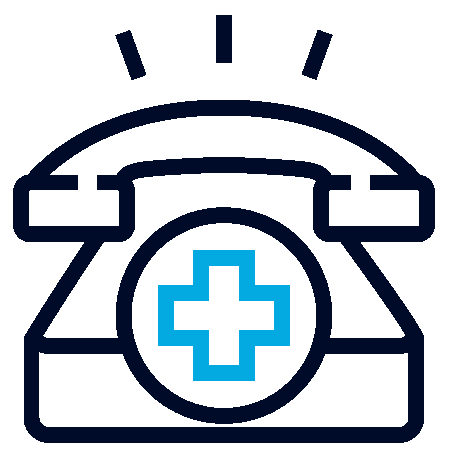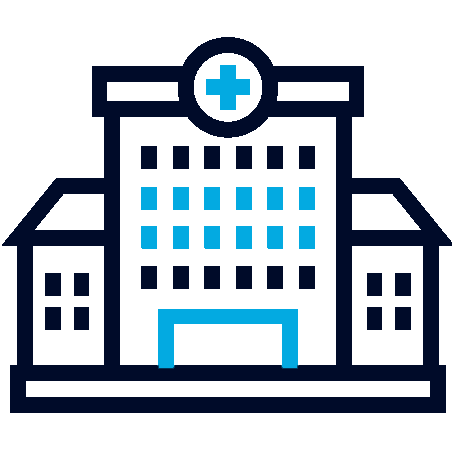Son güncelleme 16 September 2025 by ömer bozdurman
Lower back pain (LBP) is a pervasive health issue affecting millions worldwide, significantly contributing to disability, reduced quality of life, and increased healthcare costs. It is the leading cause of years lived with disability globally, with a lifetime prevalence of up to 80% in adults [1]. The condition spans all age groups and can range from mild, temporary discomfort to severe, chronic lower back pain that disrupts daily activities.

What Is Lower Back Pain?
Lower back pain refers to discomfort or pain in the lumbar region, located below the rib cage and above the pelvis, encompassing the lower lumbar spine, lumbosacral area, and buttocks. It may present as localized pain, such as lower left back pain or lower right back pain, diffuse aching, or radiating sensations, varying in intensity from mild to debilitating. LBP is classified based on duration: acute (less than 6 weeks), subacute (6–12 weeks), or chronic lower back pain (more than 12 weeks). Approximately 90% of cases are non-specific, meaning no clear structural cause is identified, often linked to biomechanical, lifestyle, or psychosocial factors [2]. Specific LBP, caused by identifiable conditions like fractures, infections, or tumors, is less common but requires urgent attention. Understanding the nature of lower back pain is crucial for tailoring effective lower back pain treatments and prevention strategies.
Common Causes of Lower Back Pain
Lower back pain causes vary widely, including mechanical injuries, degenerative conditions, and lifestyle factors. Identifying the root causes of lower back pain is essential for effective management.
Muscle Strain and Ligament Sprain
Muscle strains and ligament sprains are among the most frequent causes of lower back pain, leading to lower left back pain or lower right back pain. These injuries occur due to sudden movements, heavy lifting, or awkward postures that overstretch or tear muscles and ligaments, causing localized inflammation and pain. Such injuries are common in individuals engaging in physically demanding activities or those with poor body mechanics. Most cases resolve within weeks with conservative lower back pain treatments, such as rest, ice, and stretches for lower back pain, but recurrence is possible without addressing underlying risk factors [3]. Proper lifting techniques and ergonomic adjustments can significantly reduce the likelihood of these injuries.
Herniated or Bulging Discs
Intervertebral discs act as cushions between the spine’s vertebrae. A herniated or bulging disc occurs when the disc’s outer layer weakens, allowing the inner material to protrude and compress nearby nerves. This can cause lower left back pain, lower right back pain, or radiating pain, such as sciatica, which extends to the hips, buttocks, or legs. Disc herniation is a leading cause of lower back pain, particularly in adults aged 30–50, and is often triggered by repetitive strain, trauma, or age-related disc degeneration [4]. Risk factors include prolonged sitting, heavy lifting, and genetic predisposition.
Degenerative Disc Disease
Degenerative disc disease (DDD) involves the progressive deterioration of intervertebral discs, reducing their hydration and elasticity. This leads to decreased cushioning, increased spinal stress, and, in some cases, osteoarthritis or spinal stenosis. DDD is a common cause of lower back pain, particularly chronic lower back pain in older adults, and is associated with aging, repetitive stress, and genetic factors. Magnetic resonance imaging studies reveal that DDD is prevalent in up to 40% of asymptomatic individuals over 40, indicating its complex role in pain development [5].
Poor Posture and Lifestyle Factors
Modern lifestyles significantly contribute to lower back pain causes. Prolonged sitting, poor posture, and sedentary behavior weaken core muscles, leading to muscle imbalances and increased spinal strain, which may manifest as lower left back pain or lower right back pain. Obesity is a well-documented risk factor, with studies showing a 1.5–2 times higher risk of LBP in obese individuals due to increased mechanical load and inflammation [6]. Smoking exacerbates LBP by reducing blood flow to spinal tissues, while stress can amplify pain perception through neuroinflammatory pathways. In women, lower back pain causes before periods are often linked to hormonal fluctuations, which cause muscle tension, fluid retention, or pelvic congestion, further stressing the lumbar region.
Symptoms of Lower Back Pain
The symptoms of lower back pain vary widely, depending on the causes of lower back pain, duration, and individual factors, impacting daily functioning and quality of life.
Localized Pain and Stiffness
Localized pain in the lower back, such as lower left back pain or lower right back pain, is the most common symptom, often described as a dull ache, sharp sensation, or burning discomfort. Stiffness frequently accompanies the pain, limiting flexibility and making movements like bending or twisting challenging, particularly after prolonged inactivity [7]. This is common in muscle strains, ligament sprains, or degenerative conditions.
Radiating Pain to Hips or Legs (Sciatica)
When lower back pain radiates to the hips, buttocks, or legs, it may indicate sciatica, caused by compression of the sciatic nerve, often due to a herniated disc. Sciatica manifests as burning, tingling, or numbness in the affected leg, significantly impairing mobility. Approximately 10–40% of LBP patients experience sciatica, with severity varying based on the degree of nerve compression [4].
Limited Range of Motion
Lower back pain often restricts range of motion, making daily tasks like lifting, walking, or climbing stairs difficult. This limitation is pronounced in chronic lower back pain or when inflammation affects spinal joints or muscles, leading to compensatory movement patterns that may worsen the condition [8].
Types of Lower Back Pain
Lower back pain is categorized by duration and underlying mechanisms, which guide lower back pain treatments.
Acute Lower Back Pain
Acute LBP, lasting less than 6 weeks, is typically caused by minor injuries like muscle strains or ligament sprains, often resulting in lower left back pain or lower right back pain. It often resolves with conservative lower back pain treatments, such as rest, over-the-counter medications, or stretches for lower back pain, but early intervention is key to preventing chronicity [3].
Chronic Lower Back Pain
Chronic lower back pain persists beyond 12 weeks and is associated with significant disability, reduced quality of life, and psychosocial factors like stress or depression. It may stem from degenerative conditions, persistent inflammation, or unresolved acute injuries. Chronic lower back pain requires a multidisciplinary approach, including physical and psychological lower back pain treatments [2].
Mechanical vs. Non-Mechanical Pain
Mechanical pain arises from physical structures like muscles, ligaments, or discs and worsens with specific movements or postures, often presenting as lower left back pain or lower right back pain. Non-mechanical pain, less common, may result from systemic conditions like infections, inflammatory diseases, or tumors and persists regardless of activity. Distinguishing between these types is critical for accurate diagnosis [8].
Diagnosis of Lower Back Pain
Diagnosing lower back pain involves a comprehensive approach, including a detailed medical history, physical examination, and, if indicated, imaging tests (X-rays, MRI, or CT scans). Clinicians evaluate pain characteristics, neurological symptoms (e.g., numbness or weakness), and risk factors, such as lower back pain causes linked to hormonal or gynecological issues in women. Diagnostic triage identifies non-specific LBP versus serious conditions like fractures, infections, or cauda equina syndrome, which require urgent intervention [7]. Advanced imaging is reserved for cases with red flags, such as neurological deficits or systemic symptoms.
Treatment Options for Lower Back Pain
Lower back pain treatments vary based on the causes of lower back pain, severity, and duration, with clinical guidelines emphasizing non-pharmacological approaches for optimal outcomes.
Non-Surgical Medical Treatments
Medications: Non-steroidal anti-inflammatory drugs (NSAIDs), such as ibuprofen, are first-line lower back pain treatments for acute and chronic lower back pain, reducing pain and inflammation. Muscle relaxants or analgesics may be prescribed for short-term relief in severe cases [3]. Opioids are rarely recommended due to risks of dependency and limited efficacy.
Physical Therapy: Physical therapy focuses on improving mobility, strength, and posture through targeted stretches for lower back pain and exercises. It is highly effective for chronic lower back pain, with studies showing a 30–50% reduction in pain and disability [9].
Education and Self-Management: Educating patients about pain management, activity resumption, and realistic expectations reduces fear and improves outcomes. Structured education programs have been shown to enhance recovery in acute LBP [10].
Minimally Invasive Procedures
For persistent lower left back pain, lower right back pain, or sciatica, minimally invasive options like epidural steroid injections or nerve blocks target inflammation or nerve compression. These procedures provide temporary relief and are recommended when conservative lower back pain treatments fail [8]. However, their long-term efficacy remains debated.
Surgical Treatments (For Severe Cases)
Surgery is reserved for severe cases, such as significant disc herniation, spinal stenosis, or structural instability, when conservative lower back pain treatments fail. Procedures like discectomy or spinal fusion aim to relieve nerve compression or restore spinal stability. A 2020 randomized trial found that surgical intervention improved outcomes in specific cases but carries risks like infection or prolonged recovery [11]. Surgery is considered only when benefits outweigh potential complications.
Exercises and Rehabilitation for Lower Back Pain
Exercise is a cornerstone of lower back pain treatments, with robust evidence supporting its role in reducing pain, improving function, and preventing recurrence.
Stretching and Flexibility Exercises
Stretches for lower back pain, such as hamstring stretches, cat-cow poses, or child’s pose, improve flexibility and relieve muscle tension in areas like lower left back pain or lower right back pain. Yoga, which combines stretches for lower back pain with mindfulness, is particularly effective for chronic lower back pain, reducing pain by 30–40% and improving function [12]. Regular stretching enhances spinal mobility and reduces stiffness, especially in sedentary individuals.
Core Strengthening Exercises
Strengthening core muscles (e.g., abdominals, obliques, and lower back muscles) supports the spine and reduces stress on discs and joints. Exercises like planks, bridges, and bird-dog are evidence-based lower back pain treatments, with studies showing significant improvements in chronic lower back pain and disability [13]. Consistent core training can prevent recurrence by enhancing spinal stability.
Postural Training and Ergonomics
Postural training corrects alignment issues, while ergonomic adjustments, such as using supportive chairs, lumbar rolls, or standing desks, minimize spinal strain, particularly for lower left back pain or lower right back pain. These interventions are beneficial for office workers, with studies demonstrating a 20–30% reduction in LBP with ergonomic modifications [14]. Proper posture during daily activities, such as lifting or sitting, is critical for long-term prevention.
Preventing Lower Back Pain
Preventing lower back pain involves adopting healthy habits and addressing modifiable lower back pain causes. Regular exercise, including stretches for lower back pain and strengthening routines, reduces LBP risk by 33% compared to no exercise [15]. Maintaining a healthy weight mitigates mechanical stress, while smoking cessation improves spinal tissue health. Stress management through mindfulness or relaxation techniques can reduce pain perception. For women, managing lower back pain causes like premenstrual discomfort through diet (e.g., reducing sodium) or stress reduction (e.g., meditation) can minimize discomfort. Ergonomic workplace adjustments and regular movement breaks further support prevention.
When to See a Doctor for Lower Back Pain
Most cases of lower back pain resolve with conservative lower back pain treatments, but certain symptoms require immediate medical attention. Seek a doctor if you experience:
- Severe or worsening lower left back pain or lower right back pain that persists beyond a few weeks
- Radiating pain, numbness, or weakness in the legs, indicating nerve involvement
- Loss of bowel or bladder control, a sign of cauda equina syndrome (a medical emergency)
- Systemic symptoms like fever, unexplained weight loss, or night pain, suggesting infection or malignancy
Early consultation ensures timely diagnosis and prevents complications, particularly for chronic lower back pain [7].
Lower back pain, whether acute or chronic lower back pain, is a multifaceted condition with lower back pain causes ranging from muscle strains and herniated discs to degenerative diseases and lifestyle factors. Symptoms like lower left back pain, lower right back pain, stiffness, or sciatica can significantly impact daily life. Evidence-based lower back pain treatments, including physical therapy, NSAIDs, and stretches for lower back pain, are effective for most cases, while minimally invasive procedures or surgery are reserved for severe conditions. Preventive measures, such as regular exercise, ergonomic adjustments, and healthy lifestyle choices, can reduce the risk of recurrence. For personalized management, especially for persistent or severe symptoms, consult a healthcare professional to tailor lower back pain treatments to your needs.
References
- Hartvigsen, J., Hancock, M. J., Kongsted, A., et al. (2018). What low back pain is and why we need to pay attention. The Lancet, 391(10137), 2356–2367. https://pubmed.ncbi.nlm.nih.gov/29573870/
- Maher, C., Underwood, M., & Buchbinder, R. (2017). Non-specific low back pain. The Lancet, 389(10070), 736–747. https://pubmed.ncbi.nlm.nih.gov/27745712/
- Qaseem, A., Wilt, T. J., McLean, R. M., & Forciea, M. A. (2017). Noninvasive treatments for acute, subacute, and chronic low back pain: A clinical practice guideline from the American College of Physicians. Annals of Internal Medicine, 166(7), 514–530. https://pubmed.ncbi.nlm.nih.gov/28192789/
- Ropper, A. H., & Zafonte, R. D. (2015). Sciatica. New England Journal of Medicine, 372(13), 1240–1248. https://pubmed.ncbi.nlm.nih.gov/25806916/
- Cheung, K. M., Karppinen, J., Chan, D., et al. (2019). Prevalence and pattern of lumbar magnetic resonance imaging changes in a population study of one thousand forty-three individuals. Spine, 34(9), 934–940. https://pubmed.ncbi.nlm.nih.gov/19360001/
- Shiri, R., Karppinen, J., Leino-Arjas, P., et al. (2010). The association between obesity and low back pain: A meta-analysis. American Journal of Epidemiology, 171(2), 135–154. https://pubmed.ncbi.nlm.nih.gov/20007994/
- Deyo, R. A., Dworkin, S. F., Amtmann, D., et al. (2014). Report of the NIH Task Force on research standards for chronic low back pain. The Journal of Pain, 15(6), 569–585. https://pubmed.ncbi.nlm.nih.gov/24841307/
- Chou, R., Deyo, R., Friedly, J., et al. (2016). Noninvasive treatments for low back pain. Agency for Healthcare Research and Quality. https://pubmed.ncbi.nlm.nih.gov/26985522/
- Searle, A., Spink, M., Ho, A., & Chuter, V. (2018). Exercise interventions for the treatment of chronic low back pain: A systematic review and meta-analysis of randomised controlled trials. Clinical Rehabilitation, 29(12), 1155–1167. https://pubmed.ncbi.nlm.nih.gov/25681408/
- Traeger, A. C., Hübscher, M., Henschke, N., et al. (2017). Effect of primary care–based education on reassurance in patients with acute low back pain: Systematic review and meta-analysis. JAMA Internal Medicine, 177(3), 380–387. https://pubmed.ncbi.nlm.nih.gov/28192561/
- Fritzell, P., Hägg, O., Wessberg, P., & Nordwall, A. (2020). Lumbar fusion versus nonsurgical treatment for chronic low back pain: A multicenter randomized controlled trial from the Swedish Lumbar Spine Study Group. The Spine Journal, 20(2), 169–178. https://pubmed.ncbi.nlm.nih.gov/31518688/
- Wieland, L. S., Skoetz, N., Pilkington, K., et al. (2016). Yoga treatment for chronic non-specific low back pain. Cochrane Database of Systematic Reviews, 2017(1). https://pubmed.ncbi.nlm.nih.gov/28076926/
- Owen, P. J., Miller, C. T., Mundell, N. L., et al. (2019). Which specific modes of exercise training are most effective for treating low back pain? Network meta-analysis. British Journal of Sports Medicine, 54(21), 1279–1287. https://pubmed.ncbi.nlm.nih.gov/31666220/
- Shariat, A., Cleland, J. A., Danaee, M., et al. (2018). Effects of stretching exercise training and ergonomic modifications on musculoskeletal discomforts of office workers: A randomized controlled trial. Brazilian Journal of Physical Therapy, 22(2), 144–153. https://pubmed.ncbi.nlm.nih.gov/29277328/
- Shiri, R., Coggon, D., & Falah-Hassani, K. (2016). Exercise for the prevention of low back pain: Systematic review and meta-analysis of controlled trials. American Journal of Epidemiology, 187(5), 1093–1101. https://pubmed.ncbi.nlm.nih.gov/29025010/



